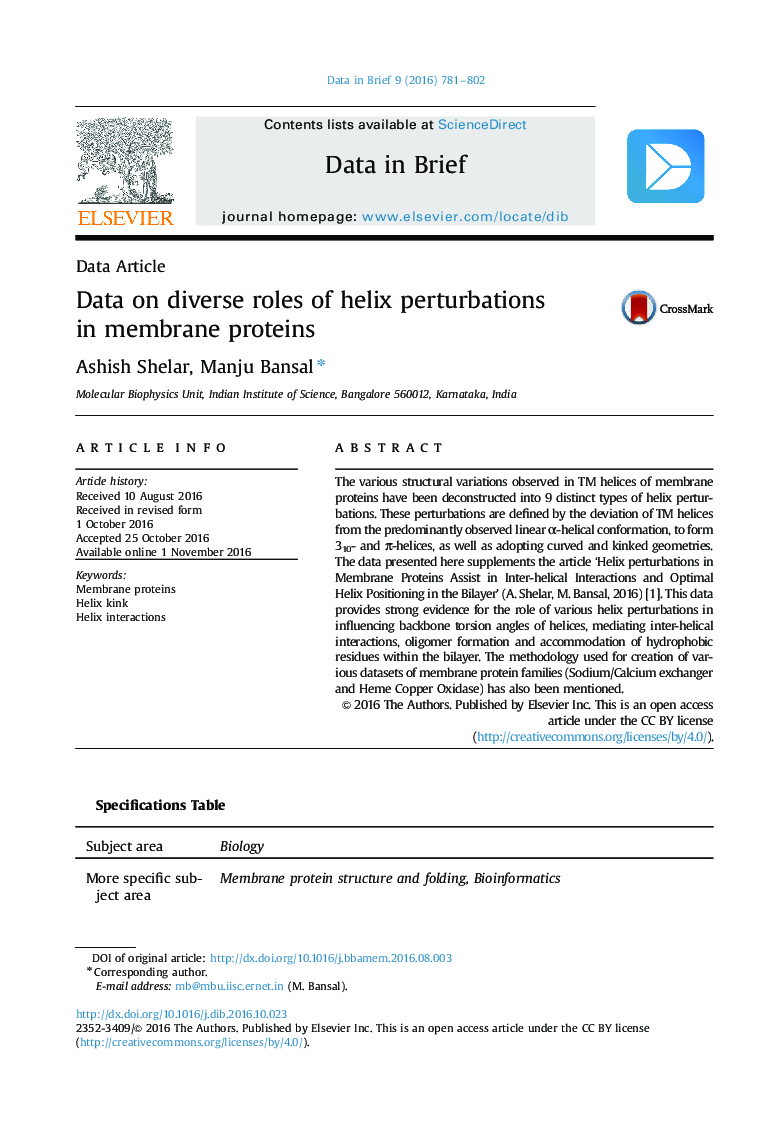| Article ID | Journal | Published Year | Pages | File Type |
|---|---|---|---|---|
| 4765517 | Data in Brief | 2016 | 22 Pages |
The various structural variations observed in TM helices of membrane proteins have been deconstructed into 9 distinct types of helix perturbations. These perturbations are defined by the deviation of TM helices from the predominantly observed linear α-helical conformation, to form 310- and Ï-helices, as well as adopting curved and kinked geometries. The data presented here supplements the article 'Helix perturbations in Membrane Proteins Assist in Inter-helical Interactions and Optimal Helix Positioning in the Bilayer' (A. Shelar, M. Bansal, 2016) [1]. This data provides strong evidence for the role of various helix perturbations in influencing backbone torsion angles of helices, mediating inter-helical interactions, oligomer formation and accommodation of hydrophobic residues within the bilayer. The methodology used for creation of various datasets of membrane protein families (Sodium/Calcium exchanger and Heme Copper Oxidase) has also been mentioned.
